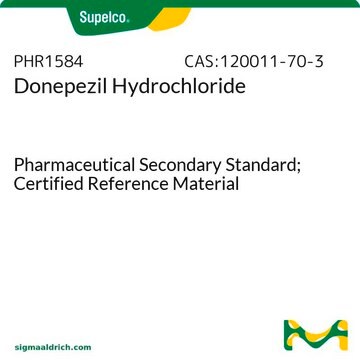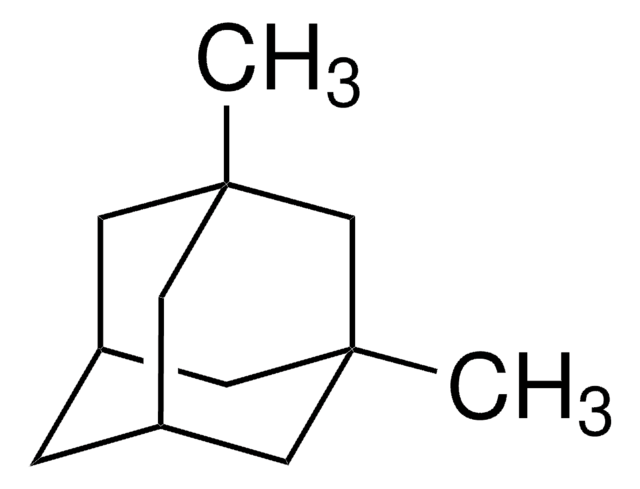M9292
Memantin -hydrochlorid
≥98% (GC), powder, NMDA glutamate receptor antagonist
Synonym(e):
3,5-Dimethyl-1-adamantanamin -hydrochlorid, 3,5-Dimethyl-amantadin -hydrochlorid, 3,5-Dimethyltricyclo[3.3.1.13,7]decan-1-amin -hydrochlorid
About This Item
Empfohlene Produkte
product name
Memantin -hydrochlorid, ≥98% (GC)
Assay
≥98% (GC)
Form
powder
Ersteller
Forest Labs
SMILES String
Cl.C[C@]12CC3C[C@](C)(C1)CC(N)(C3)C2
InChI
1S/C12H21N.ClH/c1-10-3-9-4-11(2,6-10)8-12(13,5-9)7-10;/h9H,3-8,13H2,1-2H3;1H/t9-,10+,11-,12-;
InChIKey
LDDHMLJTFXJGPI-VXMZOEJHSA-N
Angaben zum Gen
human ... DRD1(1812) , DRD2(1813) , DRD3(1814) , DRD4(1815) , DRD5(1816)
Suchen Sie nach ähnlichen Produkten? Aufrufen Leitfaden zum Produktvergleich
Anwendung
- as a media supplement to serve as a control to study the neuroprotective effects of erythropoietin in N-methyl-D-aspartate receptor-induced toxicity
- to intraperitoneally inject experimental animal to study its effect on traumatic injury
- as a test compound to determine the dynamic range and selectivity of retinal pigment epithelium tissue penetration
Biochem./physiol. Wirkung
Leistungsmerkmale und Vorteile
Lagerklassenschlüssel
11 - Combustible Solids
WGK
WGK 3
Flammpunkt (°F)
Not applicable
Flammpunkt (°C)
Not applicable
Persönliche Schutzausrüstung
Eyeshields, Gloves, type N95 (US)
Analysenzertifikate (COA)
Suchen Sie nach Analysenzertifikate (COA), indem Sie die Lot-/Chargennummer des Produkts eingeben. Lot- und Chargennummern sind auf dem Produktetikett hinter den Wörtern ‘Lot’ oder ‘Batch’ (Lot oder Charge) zu finden.
Besitzen Sie dieses Produkt bereits?
In der Dokumentenbibliothek finden Sie die Dokumentation zu den Produkten, die Sie kürzlich erworben haben.
Kunden haben sich ebenfalls angesehen
Artikel
Discover Bioactive Small Molecules for ADME/Tox
DISCOVER Bioactive Small Molecules for Neuroscience
Unser Team von Wissenschaftlern verfügt über Erfahrung in allen Forschungsbereichen einschließlich Life Science, Materialwissenschaften, chemischer Synthese, Chromatographie, Analytik und vielen mehr..
Setzen Sie sich mit dem technischen Dienst in Verbindung.











